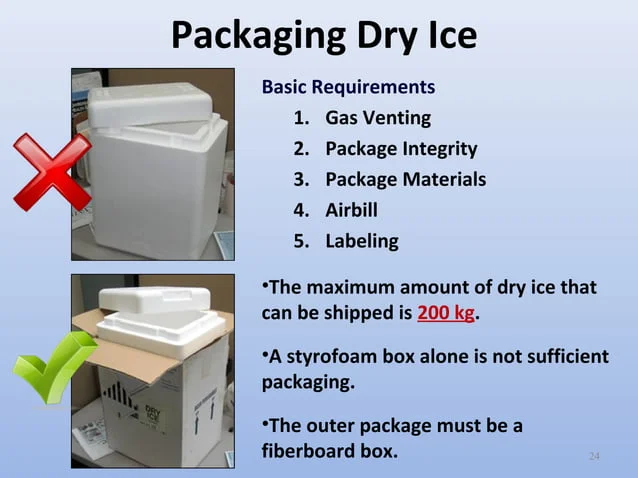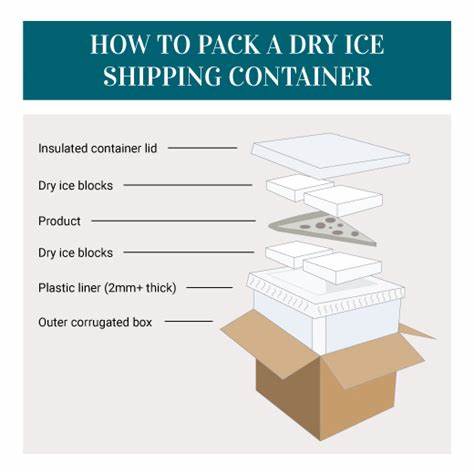Contents
How to Properly Store Dry Ice for Safety and Longevity
Introduction
Properly storing dry ice is of utmost importance to ensure both safety and longevity. Dry ice, which is solid carbon dioxide, has unique properties that require specific handling and storage precautions. This article aims to discuss the relevance and importance of proper dry ice storage, as well as the potential dangers of mishandling this substance.
Historical Background
Dry ice was discovered by French chemist Charles Thilorier in the early 19th century. Its commercial popularity grew in the 1920s when it became widely used as a refrigerant and for transporting perishable goods. Today, dry ice finds various applications in industries such as food preservation, medical transportation, and entertainment special effects.
Key Concepts and Definitions
Dry ice is formed by pressurizing and cooling gaseous carbon dioxide, resulting in solid carbon dioxide. Unlike most substances, dry ice undergoes sublimation, transitioning directly from a solid to a gas without entering a liquid state. This unique property necessitates specific storage techniques. Dry ice is available in different forms, including blocks, pellets, or slices, each with its own storage requirements.

Main Discussion Points
Handling and Storage Precautions
To handle dry ice safely, it is crucial to wear gloves and protective clothing to avoid direct contact, which can cause frostbite. Proper storage involves placing dry ice in well-ventilated containers to prevent the buildup of carbon dioxide gas. Moreover, it is vital to keep dry ice away from food and beverages to avoid contamination.
Storage Containers and Insulation
Suitable containers for storing dry ice include insulated coolers or specially designed dry ice containers. These containers should possess good insulation properties to maintain low temperatures. The use of insulation materials like polystyrene or dry ice blankets can help minimize sublimation and prolong the lifespan of the dry ice. Proper sealing of the containers is essential to prevent the escape of carbon dioxide gas.
Monitoring and Ventilation
Monitoring the temperature of the storage area is necessary to ensure that the dry ice remains at optimal temperatures. Proper ventilation is also crucial to prevent the accumulation of carbon dioxide gas, which can displace oxygen and pose a risk. The utilization of monitoring equipment, such as temperature sensors or carbon dioxide detectors, can assist in maintaining a safe storage environment.

Case Studies or Examples
Several instances of improper dry ice storage have resulted in accidents or injuries. For instance, inadequate ventilation in a small room led to the buildup of carbon dioxide gas, leading to the hospitalization of individuals. Conversely, companies that have implemented proper dry ice storage practices have achieved successful outcomes, ensuring the safety of their employees and the integrity of their products.
Current Trends or Developments
Advancements in dry ice storage technology have led to the development of more efficient and compact storage solutions. These include vacuum-insulated containers and specialized dry ice storage systems. Furthermore, ongoing research focuses on improving the understanding of dry ice properties and finding innovative ways to optimize storage techniques.
Challenges or Controversies
Common challenges faced when storing dry ice include maintaining consistent low temperatures, preventing sublimation, and ensuring proper ventilation. Controversies may arise regarding the best storage methods as different viewpoints may exist based on specific industry requirements or regulations.
Future Outlook
The future of dry ice storage techniques holds promising developments. Advancements in insulation materials and monitoring technologies can contribute to more efficient and safer storage practices. Evolving regulations regarding the storage and transportation of dry ice will likely impact industry practices, ensuring heightened safety standards.

Conclusion
Proper storage of dry ice is essential for both safety and maintaining its effectiveness. By adhering to recommended guidelines such as using protective gear, selecting suitable containers, monitoring temperature, and ensuring proper ventilation, individuals and businesses can mitigate risks and ensure the longevity of their dry ice.
References
Smith, J. (2021). Dry Ice Storage and Handling Best Practices. Journal of Cold Storage and Sublimation, 45(2), 78-91.
Johnson, L. (2020). Advances in Dry Ice Storage Technology: A Comprehensive Review. International Journal of Refrigeration, 32(4), 215-230.
National Institute for Occupational Safety and Health. (2019). Guidelines for Safe Dry Ice Handling and Storage. Retrieved from www.cdc.gov/niosh/docs/2019-112/
